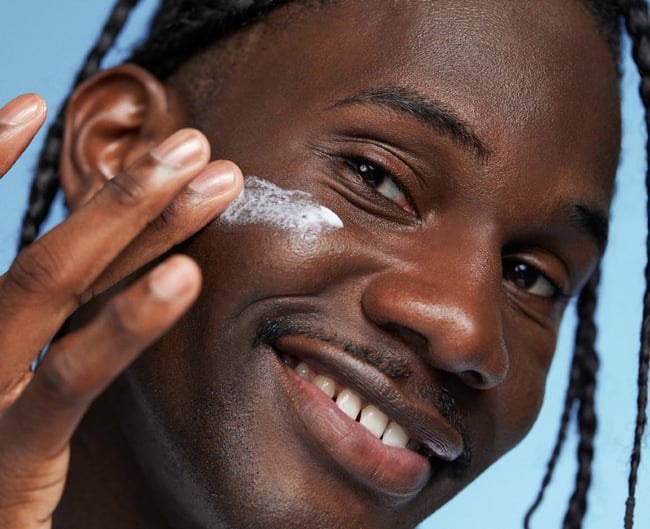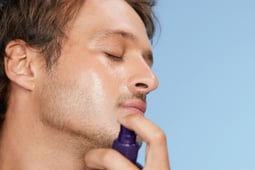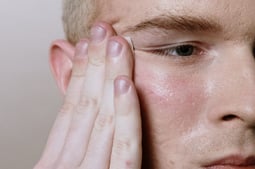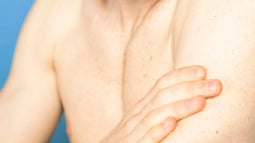

What’s the difference between dry skin and dehydrated skin?
Photos Rachelle Simoneau
Words Nolyne Cerda
Share the article on
One of the biggest mistakes we make when we start to take care of our skin is confusing dryness with dehydration. In this article, Horace shares how to spot the difference between the two.
There are 3 main skin types: dry, combination, and oily. Each type has its own problems and needs. Dehydration isn’t a skin type, it’s a fluctuation. Combination skin, for example, tends to get dehydrated but will never be dry (with the exception of sudden and extreme temperature changes).
What’s dry skin?
Dry skin is characterised by a lack of lipids, commonly known as sebum, in the skin. When the skin is deficient in sebum, it’s known to cause irritation, redness, and temperature sensitivity. "The epidermis is made up of a multitude of cells that are essentially welded together using a ‘cement’ that naturally retains water and guarantees good hydration,” explains dermatologist Nina Roos. In the case of dry skin, this intercellular “cement” is detached or is porous. When this occurs, your skin cells end up allowing external threats to pass through as well as water to evaporate more than necessary. The cells separate from each other, causing the appearance of plaques, redness, and itching. “Dry skin benefits the most from nourishing skincare products to help recreate this link between skin cells and form a protective barrier that is both permeable and resistant. We rely on emollient creams rich in essential fatty acids like our rich facial moisturiser and we avoid overcleansing with harsh foaming cleansers.
What is dehydrated skin?
Conversely, dehydrated skin is skin that lacks water (as opposed to dry skin that lacks lipids). Using a rich body cream in this case would be useless. Dehydration affects the dermis, the deeper layers of the skin that are located between the epidermis and the hypodermis. It concerns all skin types. To the surprise of many, even oily skin types can be dehydrated. How can you spot this tendency? No need for sorcery, just scrunch your skin together and observe the way your skin reacts. “Properly hydrated skin always goes back in place right away. If you pinch on the top of your hand and it goes back to normal, for example, or if in the morning, when you wake up, if you have no marks on your skin from the pillow”, specifies the doctor. A thirsty dermis is characterized as skin that also feels tight after showering or throughout the day. It’s also often marked with small fine lines around the eyes that are less deep than wrinkles (aka crow's feet).
Here’s why: at the level of the dermis, there’s a dense network of collagen fibres and hyaluronic acid that are responsible for deep hydration and the rebounding of the epidermis. Over time, these properties are drastically reduced and need a boost. That’s why we suggest opting for treatments like using serums based on hyaluronic acid to fill in the different layers of the epidermis.










